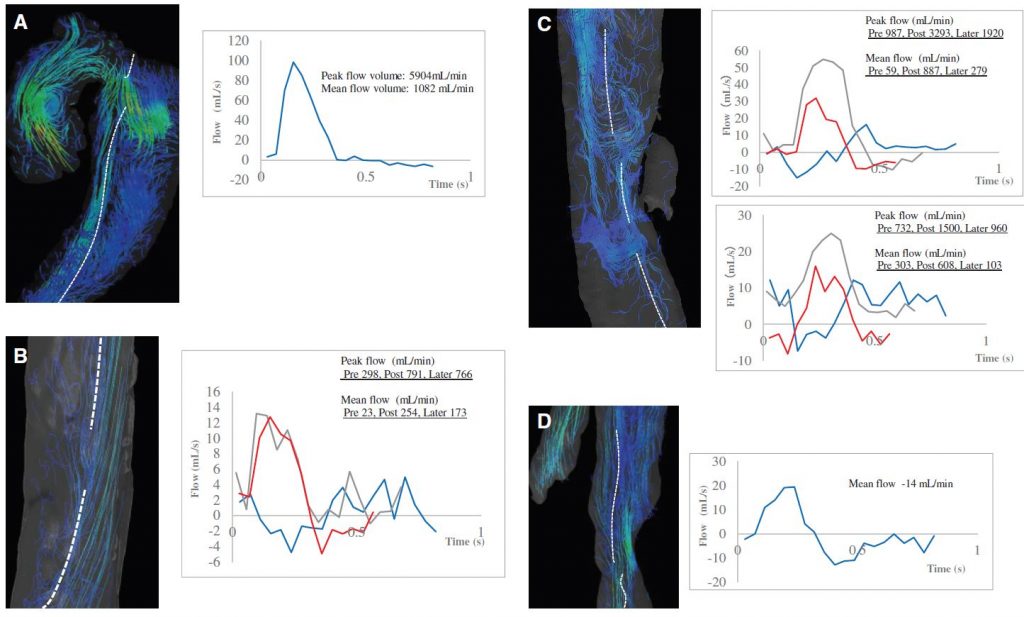Four-dimensional flow magnetic resonance imaging analysis before and after thoracic endovascular aortic repair of chronic type B aortic dissection
In the patient with Stanford type B aorticdissection, the false lumen may expand after TEVAR and additional treatment maybe required. However, the mechanism is not completely understood. 4D Flow MRI wasperformed on a 50-year-old patient with Stanford type B aortic dissection before,soon after, and 6 months after TEVAR to measure the flow rate of entry/re-entry, false lumen, and true lumen. The results showed that changes in the flow volume of re-entrysite and false lumen were correlated with changes in the volume of the false lumen. 4D Flow MRI could help non-invasive treatment strategies for patients withStanford type B aortic dissection after TAVER.
Reference
Yusuke Takei, Keiichi Itatani, Shohei Miyazaki, Ikuko Shibasaki and Hirotsugu Fukuda, "Four-dimensional flow magnetic resonance imaging analysis before and after thoracic endovascular aortic repair of chronic type B aortic dissection", Interactive CardioVascular and Thoracic Surgery, 28 (2019) 413–420.
Go To the Journal Page
